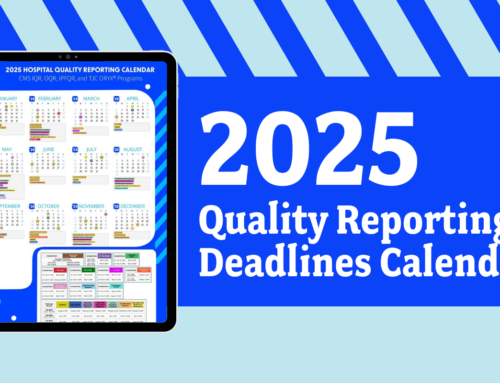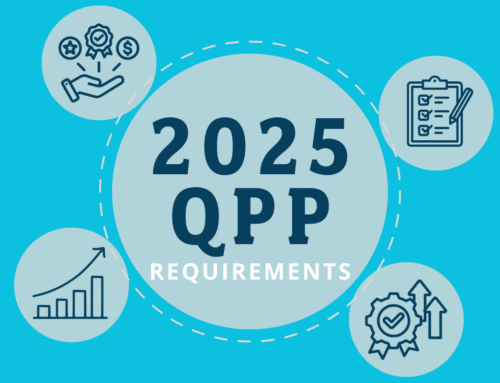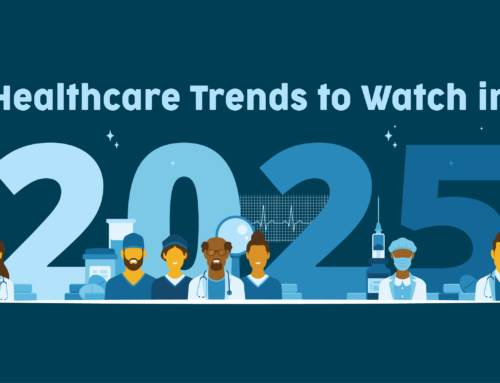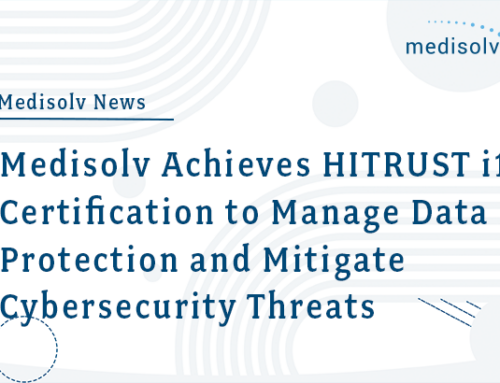In 2015, McAlester Regional Health Center began waging a carefully plotted war against opioids—even before the White House declared it a public health crisis in 2017 and long before CMS released the Safe Use of Opioids – Concurrent Prescribing eCQM in 2020.
It’s an effort that has paid off by every metric of success. But by CMS’s Safe Use metric alone, McAlester now boasts a 8% co-prescribing rate among discharged patients, significantly beating the national average among Medisolv clients (16%) and pushing the Oklahoma-based health system into the top 20 of all hospitals nationwide, as tracked by Medisolv.
We asked two of the leaders behind McAlester’s efforts to share the secrets to their Safe Use of Opioids success.
Meet McAlester’s Experts
Robbie Savely, Pharm.D. | Pharmacist & Clinical Coordinator
Whitney Hull | Quality Director
When CMS announced the Safe Use of Opioids – Concurrent Prescribing eCQM, you already had a good 5 years of opioid management under your belts. Did that make implementing the measure easier?
Whitney: Significantly so. We really did not have to add any additional processes to be successful. The work we were already doing was reflected in the measure.
That must have been very rewarding. So then take us back to 2015, when McAlester first decided to address the opioid crisis. What prompted the effort?
Robbie: We saw this was a problem before it became a national issue. Our lead ER physician at that time brought it to us. He was seeing a lot of stuff coming in from the community that didn’t make sense to him. Everyone seemed to be on opioids and having issues with opioids. We both could see there was room for improvement and things we could be doing better. So, we put our heads together and went a little rogue with it. We had no idea what we were doing, but we knew we had to do something.
You identified a problem that no one in healthcare had really solved yet. How did you know where to start?
Robbie: We actually started with the idea of antimicrobial stewardship. It’s a widely accepted framework on how pharmacists can get involved in the daily monitoring of antibiotics in order to prevent antimicrobial resistance. I was on the front end of it because infectious disease is my specialty. So, when we started looking at the issue of opioids, I thought, “I wonder if we could create a similar framework?” If a patient gets started on a new antibiotic, we automatically review it. Why can’t we do the same if a patient gets started on a new opioid?
That’s a really smart idea. What did you have to do to officially put it into motion?
Robbie: Our ER physician team and pharmacy team formed a joint stewardship committee that would deal with both antibiotics and opioids. It was much easier to duplicate the build across both classes since we were structuring them both at the same time, with the idea of using the same framework.
Our partnership worked out very well. The ER physician leader was very clear on where we wanted to drive toward, so he was able to get leadership on board, while I stood in the background and mined through all the data and the framework. We were also able to bring in key leaders from various departments such IT, nursing, our hospitalist team, and our quality team, which were all crucial to our success.
Our quality team was great about telling us what we could and couldn’t do with our crazy ideas, and how to route things to the right people to do things the right way. Leadership gave us so much free rein to make change. We wanted to use that freedom responsibly and make sure we were leading this effort the right way.
Describe how your opioid stewardship framework works. What exactly do you do?
Robbie: Aside from typical committee initiatives, it all comes down to daily pharmacy involvement. We’re monitoring what’s being prescribed in real time, every day. Any time a provider submits a new opioid prescription with a benzodiazepine, he or she is getting a call from us almost immediately. And if you’re the type of provider who’s going to write for that combination 5 times a day for 5 different patients, you’re going to get 5 phone calls from the pharmacy asking you why you’re doing that. It’s going to get really annoying, really fast! [chuckles].
Do the phone calls work?
Robbie: Yes, the calls have really created a culture change. Now if one provider is griping about getting phone calls from pharmacy, the other provider will say, “Yeah, but why are you prescribing benzodiazepines and opioids?” They’re helping each other out. But more importantly, we simply don’t have to make that many phone calls anymore. It’s amazing.
What are the framework’s other tools and tactics that you’ve implemented?
Robbie: A big one is MME – morphine milligram equivalents. It’s a unit of measurement that we use to standardize how much total opioids a provider is prescribing per patient, regardless of which opioid. We had a lot of clinicians saying, “Yeah, I prescribe a lot of doses, but they’re small doses or less potent opioids. It’s like 1 milligram, it’s not a big deal.” So now we convert every opioid dosage—whether it’s tramadol or Percocet or what have you—into MMEs to create a clear, standardized picture for our providers of how much they’re really prescribing.
Whitney: We also share the unblinded prescribing data we’re capturing with our physicians, specialty by specialty. Hospitalists are compared to their fellow hospitalists. Orthopedic surgeons are compared to orthopedic surgeons and so on. It creates healthy competition.
Robbie: Exactly! No one wants to be the highest opioid prescriber!
Did you receive pushback from your physicians on any of these tactics?
Robbie: Actually, their response has been overwhelmingly positive. I honestly believe they were relieved. A lot of providers’ prescribing methods evolved out of HCAHPS and the understandable pressure that they felt to make sure those scores are high. Our opioid stewardship initiative has given them the freedom to do what we now know to be in the patient’s best interest.
You raise a good point. Your Safe Use of Opioids metrics are incredible, but what kind of impact did it have on your HCAHPS scores?
Whitney: It was surprising! As we cut the use of opioids, our patient satisfaction regarding pain control did not see any change. Our patients were not complaining that their pain was uncontrolled. On top of all the work that our pharmacy is doing, we do a lot of patient education now around pain management, and I think that plays a big role in this.
What patient education tactics have worked for you?
Whitney: We created a comfort menu that every patient receives before we give them any pain medications. It walks patients through their non-opioid options, like Tylenol and ibuprofen, as well as their non-pharmalogical options like changing positions, using pillows, or applying hot and cold packs. We make sure that every single patient understands their options before they’re prescribed an opioid.
Robbie: There is good data that shows that when patients are more in control of their pain management—when they feel like they’re part of the team and they’re not just laying there helplessly—those patients consume less opioids. Whitney was critical in putting together that piece of the puzzle for us.
You’ve given us a fantastic list of actionable ideas today. Any final lessons learned that you can share with other hospitals that want to mirror your Safe Use of Opioids success?
Robbie: This didn’t happen for us overnight. We started with just one unit, then moved on to two units, then three—over a span of years. So, start small. Start in one area that you know is easy to make change in. Measure it, share your data, and grow from there. Results motivate others to get on board.
I also tell people to find out who else is passionate about this in your hospital. For us it was the head of our ED. For you, it might be your surgical team or orthopedics. Figure out who it is and get them on your team, because you can’t do this alone. You need a motivated team behind you. And get your pharmacist involved daily! [laughs]
Whitney: It’s true! Physician and pharmacy leadership is key in the success of opioid stewardship. When physicians and pharmacists team up to make positive change, the other providers follow their lead. It truly makes all the difference with buy-in and accountability.
Get more secrets to “Safe Use of Opioids” success now.
Remember! 2022 is the first year that hospitals are required to report on CMS 506: Safe Use of Opioids – Concurrent Prescribing. What’s more, the results will be publicly reported. It’s never too late to make sure your hospital is on the right track. Contact us for 1:1 assistance or check out these additional resources:
Article: How to Implement the Safe Use of Opioids eCQM (CMS 506)
eBook: Opioid Measure Implementation Guide
On-Demand Webinar: Safe Use of Opioids – Concurrent Prescribing






Leave A Comment